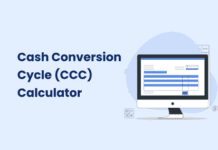Managing cash flow and working capital is key for any business. A study by Business Insider found that 82% of small businesses fail because they do not manage their cash flow well, and 29% run out of money. These numbers show how important it is to handle your finances properly. Dealing with unpredictable payments and tight budgets can be stressful for Accounts Payable (AP) and Accounts Receivable (AR) teams.
This article is all about improving invoicing, speeding up collections, and using technology to make things easier. You will also learn how to increase cash flow with these strategies, keeping cash flowing smoothly and reducing financial pressure.
To get started, let’s examine the basics of cash flow and working capital so you can start improving them.
Understanding Cash Flow and Working Capital
Before exploring the cash flow strategies, it is essential to understand cash flow and working capital. These terms might sound technical, but they form the backbone of your business’s financial health. Let us break them down.
What Is Cash Flow?
Cash flow is the movement of money in and out of your business. Think of it as your company’s financial heartbeat. Cash flows are usually from customers paying invoices, receiving loans, or other income sources. Cash flows out often for things such as paying vendors, rent, salaries, and taxes.
The key here is to ensure that more cash is coming in than going out. If not, you may struggle to pay bills or invest in growth opportunities. It is a balancing act that can make or break a business.
Cash Flow Example:
Imagine you run a small online store. You make $10,000 in sales this month, but your customers have 30 days to pay their invoices. Meanwhile, you have bills to pay right now—like $4,000 for new stock, $2,000 for rent, and $1,500 for salaries.
Even though you made $10,000 in sales, you need more cash to cover all your expenses. This creates a cash flow problem because the money is “on the way,” but you need it today. If this happens too often, it could affect your ability to pay bills on time, harming your business.
What Is Working Capital?
Working capital is the cash your business has available to cover its short-term needs. It is the result of subtracting your current liabilities (what you owe) from your current assets (what you own). In simple terms, it’s the money you have on hand to keep operations running smoothly.
If your working capital is positive, you have enough cash to cover immediate expenses. If it is negative, you may face challenges paying bills on time or keeping operations steady.
Working Capital Example:
Suppose your business has $15,000 in the bank and $8,000 worth of products you plan to sell soon. These are your current assets—what you own. At the same time, you owe $5,000 to vendors and need to pay $3,000 in monthly expenses. These are your current liabilities or “what you owe.”
To calculate working capital, subtract what you owe ($8,000) from what you own ($15,000). That leaves you with $7,000 in working capital—money you can use to keep your business running.
If your working capital is too low, you might struggle to pay bills or buy new inventory.
The Link Between Cash Flow and Working Capital
Cash flow and working capital are closely connected. Healthy cash flow ensures you have enough working capital to meet short-term business expenses. Conversely, poor cash flow can quickly eat into your working capital, leaving you with little room to breathe. This can lead to delayed payments, missed opportunities, and, in the worst cases, financial trouble.
When your cash flow and working capital are in harmony, your business has the flexibility to handle challenges and grow. But when they are not, it can feel like you are constantly putting out fires. So, you need to learn how to increase cash flow in business.
In the next section, we will explore how to assess your financial position so you can effectively manage cash flow and working capital.
Assessing Your Current Financial Position
You need to know where you stand before you can improve cash flow or working capital. This means running critical financial calculations to understand your business’s health.
- Cash Flow Analysis
Start by calculating your net cash flow. This shows how much cash flows into your business compared to what is going out. The formula is:
- Net Cash Flow = Cash Inflows – Cash Outflows
For example, if you received $20,000 from customers this month (cash inflows) but spent $15,000 on expenses such as rent, salaries, and inventory (cash outflows), your net cash flow is $20,000 – $15,000 = $5,000
A positive cash flow means you have more money coming in than going out, which is a good sign. A negative cash flow means spending more than you bring in, which could be a warning sign.
- Working Capital Ratio
Next, calculate your working capital ratio to see if you can cover your short-term expenses. The formula is:
- Working Capital Ratio = Current Assets / Current Liabilities
Suppose you have $50,000 in current assets (cash, inventory, receivables) and $30,000 in current liabilities (bills and debts due soon). Your working capital ratio would be $50,000 / $30,000 = 1.67
A ratio above 1.0 means you have more assets than liabilities, which is healthy. If the ratio drops below 1.0, it may indicate trouble paying bills.
Regularly checking these numbers allows you to spot cash flow issues early and adjust before they become bigger problems.
Practical Techniques to Improve Cash Flow and Working Capital
Small changes can make a big impact when it comes to cash flow and working capital. But how do you improve them? The answer lies in practical techniques that are not just theoretical—they are actionable strategies that can be applied today to fuel growth and stability. Let us explore these techniques and how they can help you maintain your finances.
1. Accelerating Cash Inflows
Boosting cash inflows is key to improving your overall cash flow. Speeding up your pay will give you more cash to cover expenses and invest in growth. Here are practical ways to do that.
1. Streamline Your Invoicing Process
One of the easiest ways to improve cash inflows is by making invoicing faster and more efficient. Delayed invoices lead to delayed payments, so sending them out as soon as possible is essential. Consider setting up automated invoicing to eliminate human errors and avoid forgetting to send bills. Peakflo’s e-invoicing solution can automatically generate and send invoices to customers, ensuring they receive them promptly.
You can also set clear payment terms upfront. Instead of giving customers 30 or 60 days to pay, shorten the payment window to 15 or 20 days. This reduces waiting time and encourages quicker payments.
2. Implement Effective Collections Strategies
If customers are late on payments, it is important to follow up consistently. Having a clear, structured collections process can make a big difference. Start by sending polite reminders a few days before the payment is due, and follow up immediately if the payment is late.
You can also set up Peakflo’s automated reminders to avoid manually chasing down payments. These reminders can help reduce the number of overdue invoices.
3. Offer Early Payment Incentives
Consider offering small discounts for early payments to encourage customers to pay sooner. For example, you could offer a 2% discount if they pay within 10 days. While this reduces the overall amount you receive, it speeds up cash inflows, helping you cover immediate expenses.
4. Utilize Electronic Payment Systems
The easier it is for customers to pay, the faster they will do so. Offering electronic payment options, such as credit cards, bank transfers, or online payment platforms, speeds up the process compared to checks or traditional methods. Many businesses are now adopting digital payment systems to make it convenient for customers, which can result in quicker cash inflows.
2. Managing Accounts Receivable
Effective accounts receivable management is crucial for maintaining steady cash flow. When customers take too long to pay, it ties up your cash and can lead to financial stress. Setting up innovative strategies lets you control your AR and ensure payments arrive on time.
1. Establish Clear Credit Policies
If you offer credit terms to your customers, it is essential to have clear policies in place. These policies should define who qualifies for credit, how much credit they can get, and the repayment terms. Setting these guidelines upfront will reduce the risk of late payments.
Make sure your customers are aware of these policies from the beginning. Include your credit terms on all invoices and contracts so there is no confusion about when payments are due.
2. Conduct Customer Credit Checks
Before extending credit to any customer, running a quick credit check is wise. This helps you assess whether they are likely to pay on time. By checking their financial history, you can avoid working with customers with a record of late payments.
For new customers, consider starting with smaller credit limits and gradually increasing them as they are reliable payers.
3. Monitor Aging Receivables
It is important to monitor aging receivables. This means regularly reviewing which invoices are past due and for how long. In many cases, the longer an invoice goes unpaid, the harder it is to collect. Setting up regular checks on overdue payments can help you stay on top of the situation and follow up as needed.
Consider using the accounts receivable report, which breaks down outstanding invoices by how long they have been overdue. This gives you a clear view of which payments need immediate attention.
4. Automate Reminders and Follow-Ups
Chasing down payments manually can be time-consuming and stressful. Automating reminders and follow-ups can save time and ensure no overdue payment slips through the cracks. Many invoicing systems allow you to send automatic email reminders to customers when a payment is approaching or past due.
3. Optimizing Inventory Management
Managing inventory effectively is crucial in maintaining healthy cash flow and working capital. Too much inventory ties up cash, while too little can lead to missed sales. Striking the right balance helps free up capital and keep your operations running smoothly. Let us look at some easy-to-apply strategies for optimizing your inventory management.
1. Implement Just-In-Time (JIT) Inventory
The Just-In-Time (JIT) system helps reduce excess inventory by only ordering stock when it is needed. This minimizes the cash tied up in unsold products and lowers storage costs. You can redirect cash toward other business areas by keeping your inventory lean.
For example, if you usually keep 100 units of a product in stock but only sell 50 per month, consider lowering your inventory levels to match the demand. This will free up your working capital and reduce the risk of overstocking.
2. Use Demand Forecasting
Predicting customer demand is key to avoiding overstocking or understocking. Demand forecasting tools allow you to estimate future sales based on historical data and trends. This allows you to order the right inventory at the right time, improving cash flow and reducing excess stock.
Update your forecasts regularly to reflect changing market conditions or seasonal trends. This helps prevent storing too much cash in inventory that may not sell quickly.
3. Negotiate Consignment Arrangements
With consignment arrangements, you only pay for inventory once it sells. This setup is great for freeing up cash since you do not have to pay upfront for stock. It shifts the financial burden to your vendor while allowing you to keep your shelves stocked. Many businesses use this approach to reduce risk and improve cash flow.
4. Use Inventory Tracking Software
Manually managing inventory can be time-consuming and prone to mistakes. Inventory tracking software allows you to monitor stock levels in real-time and set alerts when items need reordering. This software helps you maintain optimal inventory levels, reduce waste, and prevent stockouts. Plus, it gives you better visibility into what products are selling fast and which are collecting dust.
4. Leveraging Technology for Financial Efficiency
Technology has become a game-changer in improving financial efficiency, especially when managing AP and AR. Automation tools can streamline tedious processes, saving time and reducing errors. Let us explore how embracing technology can help your business.
1. Adopting Cloud-Based Software
Cloud-based software allows you to access your financial data anytime, anywhere. These platforms automate routine tasks, such as invoicing, payroll, and financial reporting. This not only saves time but also reduces human errors. You can easily collaborate with team members from different locations in real-time.
2. Automating Accounts Payable and Receivable
Manually tracking payments can lead to delayed invoicing or missed deadlines. Automation tools like Peakflo allow you to centralize and automate AP and AR processes.
- For AP, Peakflo helps with invoice scanning, three-way matching (invoice, purchase order, and receipt), and vendor management.
- For AR, Peakflo offers multi-channel payment reminders, task management, and customer portals to ensure faster payment.
3. Utilizing Data Analytics for Decision-Making
Data analytics tools give you insights into your company’s financial health. You can monitor cash flow, analyze expenses, and predict future financial needs with real-time dashboards. Analytics platforms help you identify patterns and trends that can inform better decision-making. This way, you can spot potential financial risks early and adjust accordingly.
4. Exploring Fintech Solutions
Fintech platforms like Peakflo can seamlessly integrate with your existing accounting software, such as QuickBooks, Xero, or Netsuite, allowing for smooth data flow. With features such as automated reconciliation and AI-powered reports, Peakflo simplifies AP and AR management. This reduces the administrative burden on your team, ensuring smoother financial operations.
Next, let us explore cash flow forecasting and budgeting to help you stay prepared for future challenges.
5. Cash Flow Forecasting and Budgeting
One of the most effective ways to maintain financial stability is to forecast cash flow and set flexible budgets. These tools help you predict future cash needs and prepare for opportunities and challenges. Let us explore using cash flow forecasting and budgeting to stay ahead.
1. Developing Accurate Cash Flow Projections
Cash flow forecasting involves predicting how much money will come in and go out of your business over a specific period. Review historical data such as past sales, expenses, and payment schedules to make accurate projections. Regularly updating these projections will help you anticipate high or low cash flow periods and take action early.
2. Creating Flexible Budgets
Budgeting allows you to allocate resources efficiently, but flexibility is vital. As business conditions change, your budget should, too. Adjust your budget to avoid financial strain if unexpected expenses arise or sales increase. A flexible budget ensures that you can navigate uncertainties without disrupting operations.
3. Scenario Planning for Different Market Conditions
It is wise to prepare for a range of possible future scenarios. For instance, what if sales suddenly drop by 20%? What if expenses increase unexpectedly? Scenario planning helps you anticipate and respond to market conditions, giving you a clear roadmap for navigating excellent and bad times. This way, you can make informed decisions even when faced with uncertainty.
4. Implementing Rolling Forecasts
Rolling forecasts allow you to update your financial projections continuously. Instead of sticking to a fixed annual budget, rolling forecasts adjust every month or quarter. This gives you real-time insight into your financial health and helps you pivot quickly if conditions change.
6. Innovative Financing Solutions
Managing cash flow doesn’t always mean relying solely on customer payments. There are various financing solutions available to help businesses access cash when needed. These innovative methods can provide a financial boost without disrupting your day-to-day operations. Let us look at some options:
1. Invoice Factoring
Invoice factoring lets you sell unpaid invoices to a third-party company (known as a factor) in return for immediate cash, providing a quick boost to your working capital.
For example, if you have $10,000 in unpaid invoices, the factor may advance you 80% upfront or $8,000. Once the invoices are paid, you receive the remaining balance minus a fee. This option helps you access cash faster without waiting for customers to pay.
2. Purchase Order Financing
With purchase order financing, a lender provides the funds you need to fulfill a customer order. Once the order is delivered and the customer pays, you repay the lender, plus a fee.
For example, if you have a $50,000 order and do not have the cash to cover production costs, a lender can provide the necessary funds upfront. This allows you to fulfill larger orders without draining your working capital.
3. Asset-Based Lending
Asset-based lending (ABL) allows you to borrow money using your assets as collateral. These assets can include inventory, equipment, or receivables.
For example, if you have $100,000 worth of equipment, you can borrow a percentage of its value—typically 70% to 80%. ABL gives you access to cash while keeping your assets in place for continued use.
4. Supply Chain Financing
Supply chain financing allows businesses to extend payment terms with vendors while giving them the option to get paid earlier. The financing company pays your vendors on time, and you repay them later. This improves cash flow by allowing you to hold onto cash longer while maintaining good vendor relationships.
7. Building a Cash Flow-Centric Culture
Building a cash flow-centric culture within your organization is essential for long-term financial health. It involves aligning every department and team to maintain positive cash flow and efficient working capital management. Let us explore some simple yet effective ways to foster this mindset across your business.
1. Educate Employees on Cash Flow Importance
It’s important for every team, not just finance, to understand how cash flow impacts the company. Provide training or workshops to educate employees on the basics of cash flow and how their roles influence it.
For example, sales teams can offer shorter payment terms, while purchasing teams can negotiate better vendor terms. When employees grasp the importance of cash flow, they will make more informed decisions.
2. Set Cash Flow KPIs Across Departments
Set cash flow-related KPIs for each department to ensure everyone is working towards the same goals. These could include reducing late payments for the sales team or cutting inventory costs for the operations team. When departments have specific metrics to meet, they are more likely to focus on improving cash flow.
3. Foster Cross-Department Collaboration
Cash flow is a company-wide responsibility, so departmental collaboration should be encouraged. For instance, finance and sales teams should communicate regularly to ensure that credit terms and payment schedules are optimized for cash flow. Similarly, operations and procurement teams should work together to balance inventory levels with cash requirements.
Ready to see how technology can transform your cash flow management? Let us explore how Peakflo makes it all easier.
Maximize Cash Flow and Boost Working Capital with Peakflo
Peakflo makes cash flow management easier through automation and integration. This speeds up payments and collections, keeping your business organized and your cash flow steady. Let us explore how that happens:
- Cash Flow Forecasting: Peakflo provides real-time visibility into your cash flow health, predicting future cash inflows and highlighting potential overdue invoices.
- Detailed Insights: It tracks your team’s collection efficiency, offering AI-powered reports that identify patterns and potential risks.
- Faster Collections: By automating reminders and offering a customer self-serve portal, Peakflo speeds up the payment process.
- Seamless Integration: It syncs with your accounting software, ensuring up-to-date forecasts and eliminating manual reconciliation.
Now that you have seen how Peakflo simplifies cash flow management and working capital, let us analyze a real-world example. Here is how Gazzda boosted its cash flow efficiency with Peakflo’s powerful automation tools.
Case Study: How Gazzda Boosted Cash Flow Efficiency with Peakflo’s Automation Solutions?
Peakflo helped Gazzda significantly improve its cash flow management by automating invoice reminders, saving the company 207 hours per month. This reduced Days Sales Outstanding (DSO) by 8 days in four months. Peakflo also streamlined Gazzda’s vendor invoice process, eliminating manual entry and saving 72 hours per month. These changes allowed Gazzda to focus more on strategic tasks and less on administrative work, ultimately enhancing its financial efficiency.
For more details, you can check out the full case study.
Conclusion
These strategies will improve your company’s cash flow and working capital, giving you more flexibility. It is important to put these tactics in place and keep evaluating how well they work. You should adjust them based on your company’s specific needs and any changes in the market.
Peakflo offers powerful tools to keep your business’s financial health strong. With seamless automation for accounts payable and accounts receivable, you can collect payments faster and simplify payment processes. By adopting Peakflo’s solutions, you can improve cash flow, streamline operations, and set your company up for long-term financial success.
Ready to experience a smoother, smarter way to handle your finances? Schedule a demo tour today and see how Peakflo can transform your cash flow management!









![Why AI Sales Calls Are Making Good Sales Reps Even Better [2025 Guide] ai sales calls](https://cdn-kmjmp.nitrocdn.com/YvtqmrsiHUxqerlSiZgbfzqqTARWTElr/assets/images/optimized/rev-834053b/blog.peakflo.co/wp-content/uploads/2025/09/65168cf6-3001-4733-8cbc-12d5684cf449-218x150.webp)

































